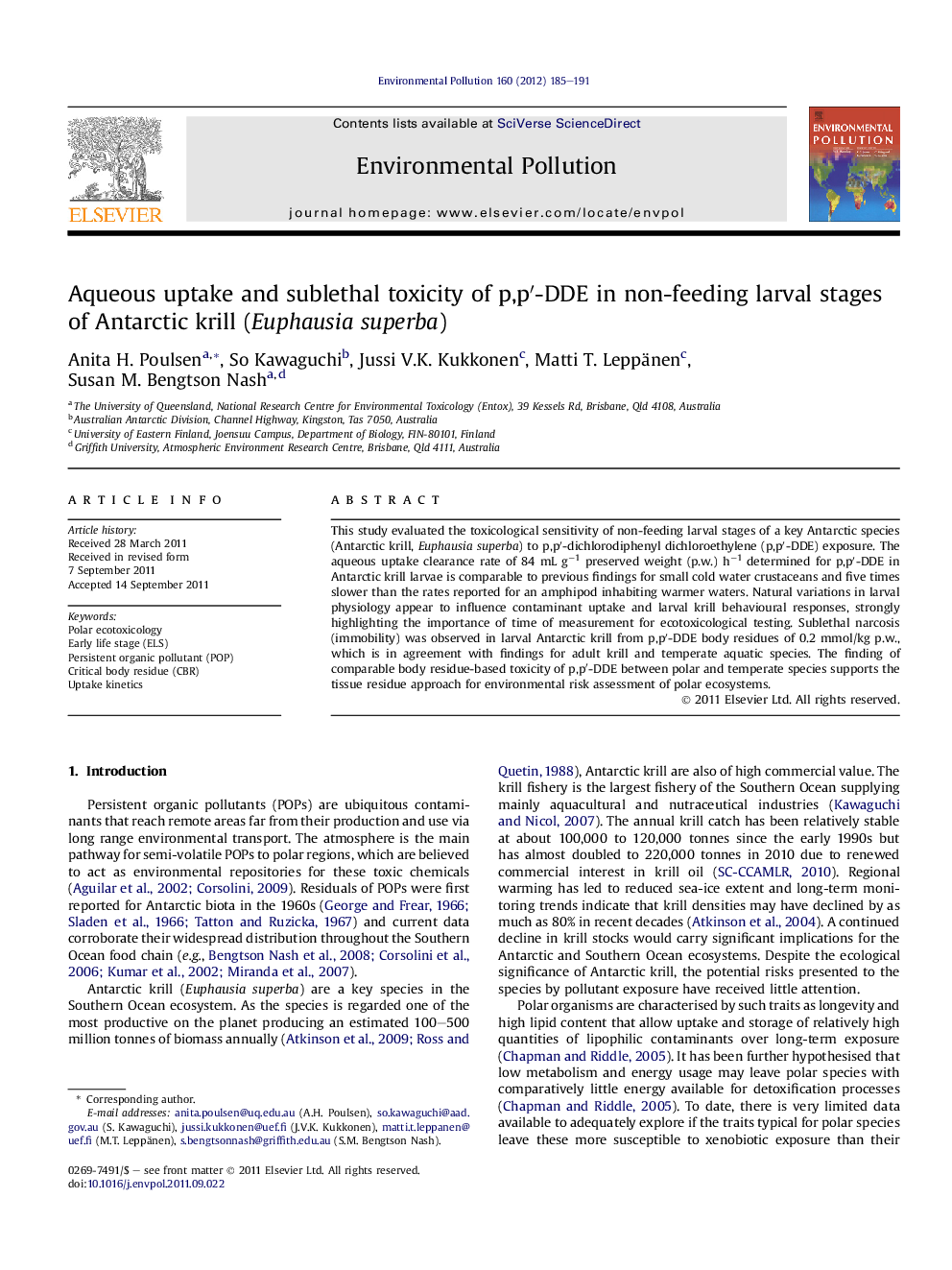| Article ID | Journal | Published Year | Pages | File Type |
|---|---|---|---|---|
| 4424701 | Environmental Pollution | 2012 | 7 Pages |
This study evaluated the toxicological sensitivity of non-feeding larval stages of a key Antarctic species (Antarctic krill, Euphausia superba) to p,p′-dichlorodiphenyl dichloroethylene (p,p′-DDE) exposure. The aqueous uptake clearance rate of 84 mL g−1 preserved weight (p.w.) h−1 determined for p,p′-DDE in Antarctic krill larvae is comparable to previous findings for small cold water crustaceans and five times slower than the rates reported for an amphipod inhabiting warmer waters. Natural variations in larval physiology appear to influence contaminant uptake and larval krill behavioural responses, strongly highlighting the importance of time of measurement for ecotoxicological testing. Sublethal narcosis (immobility) was observed in larval Antarctic krill from p,p′-DDE body residues of 0.2 mmol/kg p.w., which is in agreement with findings for adult krill and temperate aquatic species. The finding of comparable body residue-based toxicity of p,p′-DDE between polar and temperate species supports the tissue residue approach for environmental risk assessment of polar ecosystems.
► p,p′-DDE uptake in Antarctic krill larvae compares with similar cold water species. ► However, uptake is slow compared to ‘warm water’ species. ► Larval physiology appears to affect behavioural responses to toxicant exposure. ► Larval Antarctic krill internal sensitivity to p,p′-DDE is similar to temperate species. ► Supporting the tissue residue approach for environmental risk assessment in polar regions.
